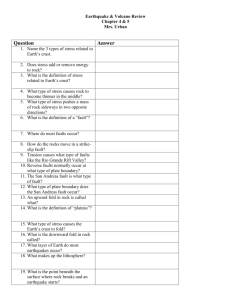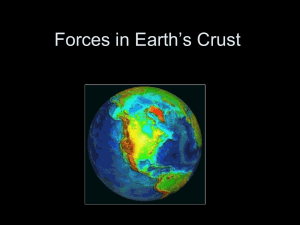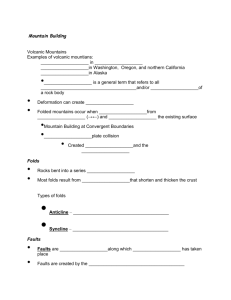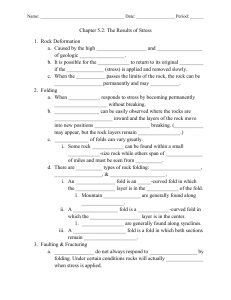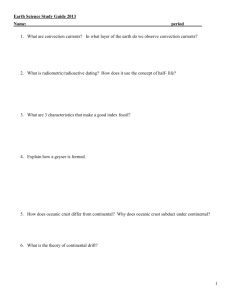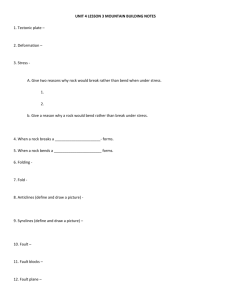Chapter 6 Section 3
advertisement
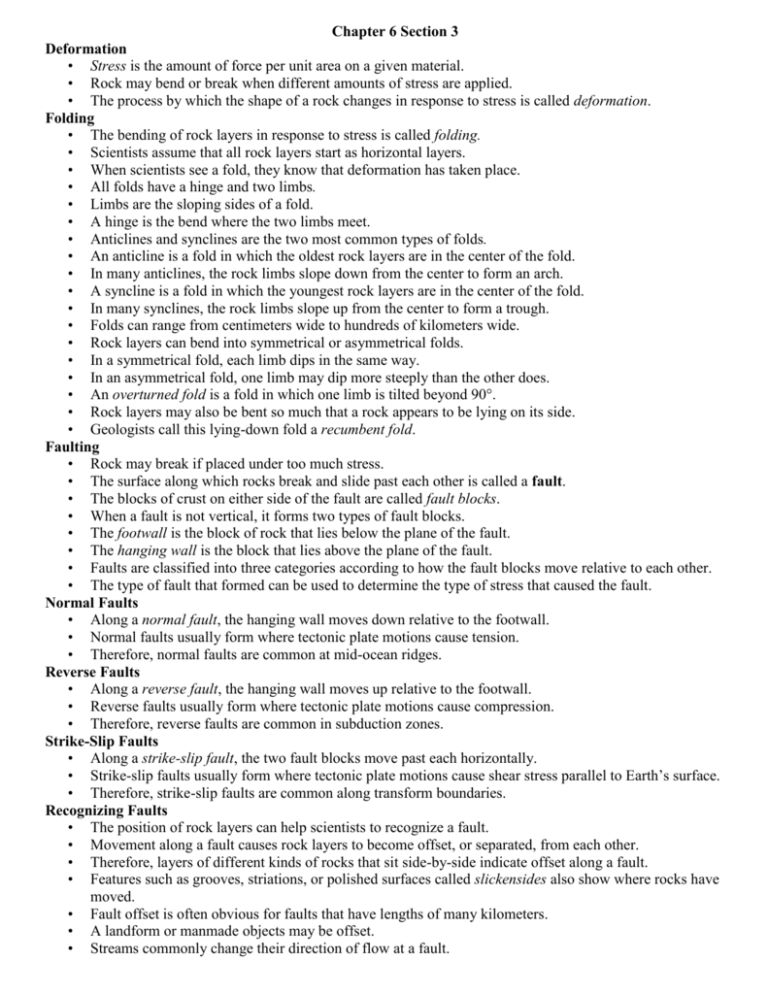
Chapter 6 Section 3 Deformation • Stress is the amount of force per unit area on a given material. • Rock may bend or break when different amounts of stress are applied. • The process by which the shape of a rock changes in response to stress is called deformation. Folding • The bending of rock layers in response to stress is called folding. • Scientists assume that all rock layers start as horizontal layers. • When scientists see a fold, they know that deformation has taken place. • All folds have a hinge and two limbs. • Limbs are the sloping sides of a fold. • A hinge is the bend where the two limbs meet. • Anticlines and synclines are the two most common types of folds. • An anticline is a fold in which the oldest rock layers are in the center of the fold. • In many anticlines, the rock limbs slope down from the center to form an arch. • A syncline is a fold in which the youngest rock layers are in the center of the fold. • In many synclines, the rock limbs slope up from the center to form a trough. • Folds can range from centimeters wide to hundreds of kilometers wide. • Rock layers can bend into symmetrical or asymmetrical folds. • In a symmetrical fold, each limb dips in the same way. • In an asymmetrical fold, one limb may dip more steeply than the other does. • An overturned fold is a fold in which one limb is tilted beyond 90°. • Rock layers may also be bent so much that a rock appears to be lying on its side. • Geologists call this lying-down fold a recumbent fold. Faulting • Rock may break if placed under too much stress. • The surface along which rocks break and slide past each other is called a fault. • The blocks of crust on either side of the fault are called fault blocks. • When a fault is not vertical, it forms two types of fault blocks. • The footwall is the block of rock that lies below the plane of the fault. • The hanging wall is the block that lies above the plane of the fault. • Faults are classified into three categories according to how the fault blocks move relative to each other. • The type of fault that formed can be used to determine the type of stress that caused the fault. Normal Faults • Along a normal fault, the hanging wall moves down relative to the footwall. • Normal faults usually form where tectonic plate motions cause tension. • Therefore, normal faults are common at mid-ocean ridges. Reverse Faults • Along a reverse fault, the hanging wall moves up relative to the footwall. • Reverse faults usually form where tectonic plate motions cause compression. • Therefore, reverse faults are common in subduction zones. Strike-Slip Faults • Along a strike-slip fault, the two fault blocks move past each horizontally. • Strike-slip faults usually form where tectonic plate motions cause shear stress parallel to Earth’s surface. • Therefore, strike-slip faults are common along transform boundaries. Recognizing Faults • The position of rock layers can help scientists to recognize a fault. • Movement along a fault causes rock layers to become offset, or separated, from each other. • Therefore, layers of different kinds of rocks that sit side-by-side indicate offset along a fault. • Features such as grooves, striations, or polished surfaces called slickensides also show where rocks have moved. • Fault offset is often obvious for faults that have lengths of many kilometers. • A landform or manmade objects may be offset. • Streams commonly change their direction of flow at a fault. • A scarp, or row of cliffs formed by faulting, can also identify a fault. • Scarps form when rock on one side is raised vertically relative to rock on the other side of the fault. Plate Tectonics and Mountain Building • As tectonic plates move around Earth’s surface, their edges grind against each other. • Over time, this process may crumple and push up the margins of the plates. • When this happens, mountain-building may occur. • When rock layers are squeezed together and pushed upward, folded mountains form. • These mountain ranges form at convergent boundaries where continents have collided. • When continents collide, compression folds and uplifts the rock. • When tension in Earth’s crust causes the crust to break into a large number of normal faults, fault-block mountains form. • These mountains form when tension causes large blocks of Earth’s crust to drop down relative to other blocks. • When molten rock erupts onto Earth’s surface, volcanic mountains form. • Most of the world’s major volcanic mountains are located at convergent boundaries. • At these boundaries, the motion of the plates causes hot mantle rocks to rise beneath the plate. • The molten rock rises to the surface and erupts. • Volcanic mountains form both on land and on the ocean floor. • Sometimes, these mountains can rise above the ocean surface to become islands. • Most of the active volcanic mountains on Earth have formed around the tectonically active rim of the Pacific Ocean. • This area is known as the Ring of Fire. • Mount Shasta in northern California is in the Ring of Fire.
